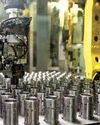
IF THE RBI’S RECENT CREDIT policy is anything to go by, talk of whether the central bank is really an independent institution is proving just that, mere talk, considering that the RBI walked the path on its mandate of inflation-targeting keeping aside economic-growth considerations for the moment.
Against the wide expectations of bankers, economists and industry stalwarts, the Monetary Policy Committee (MPC), headed by RBI Governor Urjit Patel, did not let its guard down against inflation. The RBI in its announcement on 8 February kept the repo rate or the lending rate status quo at 6.25 percent.
After the demand-squeezing effect of demonetisation, a rate cut was seen as a kick-starter to the economy. A 25 basis point rate cut would have spurred more dips in rates, which could have brought back demand for automobiles and housing.
Well, RBI is doing no such thing and, to top it, the central bank has altered its policy commentary from ‘accommodative’ to ‘neutral’, which came as a shocker to the financial markets. The impact on bond markets was knee-jerk. The 10-year government securities (G-sec), which dipped to 6.4 percent post-demonetisation, climbed to 6.7 percent, back to its pre-demonetisation levels (See chart: Back To Square One).
The RBI has had an ‘accommodative’ stance on interest rates for some time now implying a general downward bias in interest rates. The rates have been on a downward trajectory for the past two years, since January 2015, with cumulative cuts of 175 basis points till date.
“Markets were expecting a rate cut, but the full impact of the demonestation is still unclear,” say Kuntul Sur, Partner, Risk and Regulatory, PwC India. “This is an apolitical move and I don’t see any influence whatsoever.”
This story is from the {{IssueName}} edition of {{MagazineName}}.
Start your 7-day Magzter GOLD free trial to access thousands of curated premium stories, and 9,000+ magazines and newspapers.
Already a subscriber ? Sign In
This story is from the {{IssueName}} edition of {{MagazineName}}.
Start your 7-day Magzter GOLD free trial to access thousands of curated premium stories, and 9,000+ magazines and newspapers.
Already a subscriber? Sign In

MEMORIES & IMPRESSIONS
Ratan Tata was an exceptional human being. He was a visionary leader, esteemed industrialist, and a humanitarian, who left an indelible mark on India and the world.

The Robotaxi Market
The robotaxi market is shaping up to be a high-stakes battleground as tech giants and automakers race to transform urban mobility.

And the Nobel Prize Goes to AI
The recent Nobel Prize T awards to AI pioneers affiliated with Google have sparked a broader conversation about Big Tech's influence on research and the limitations of traditional prize categories.

Ola Electrified
Once considered a trailblazer in India’s electric vehicle (EV) ecosystem, Bhavish Aggarwal’s Ola Electric now faces a major accountability crisis.

Sharp Slide in Industrial Output on Eve of Deepavali
India’s index of industrial production (IIP) saw a sharp reversal in August, contracting by 0.1 per cent, in stark contrast to the 4.7 per cent growth in July, mostly because of significant contractions in mining and electricity generation.

Heralding the Solar Era with Sustainable Electrification
RAJEEV KASHYAP on the economics of solar power, the hurdles in scaling it, and much more

A WELL-GREASED MACHINE
The OmniBook X14 laptop runs on first-generation Snapdragon X Elite, which bets big on Al-enabled productivity and battery life, but falls short when it comes to overall experience, says Deep Majumdar

DO NOT LETA HEALTH CRISIS RUIN YOUR FINANCIAL HEALTH
For a family of four living in a metro, it is recommended to opt for a family floater health insurance plan with a sum insured of at least Rs 15-20 lakh

Disruption Ahead: Beyond Organisation Charts and Structures
ALBERT EINSTEIN FAMOUSLY said, “We cannot solve our problems with the same thinking we used when we created them.

Dr. Rahul Shivajirao Kadam: A Visionary Leader Blending Sustainability, Innovation, And Social Empowerment
We are on the stage of global warming, and these technologies not only help prevent further damage but also leave behind a better environment for future generations.